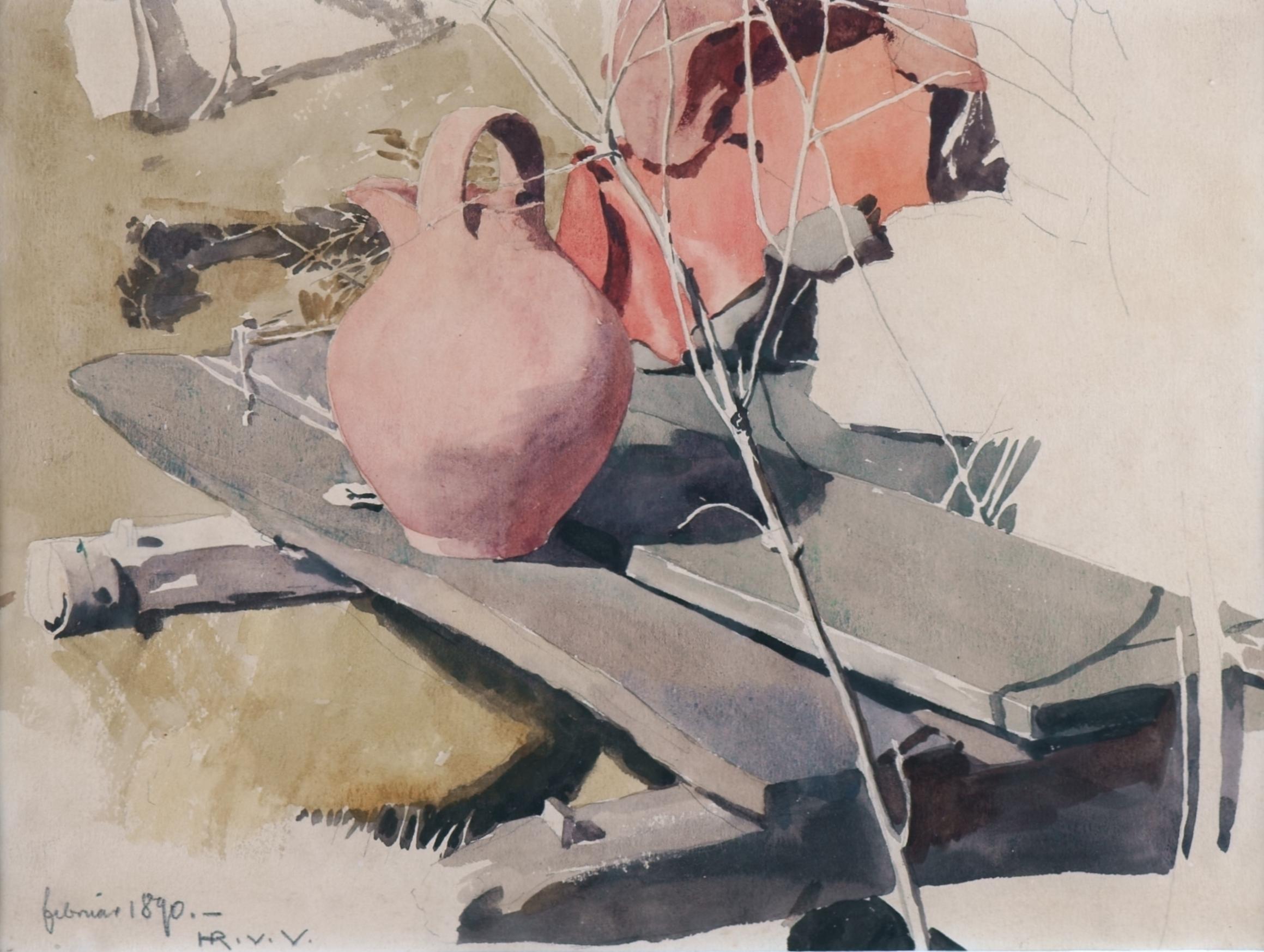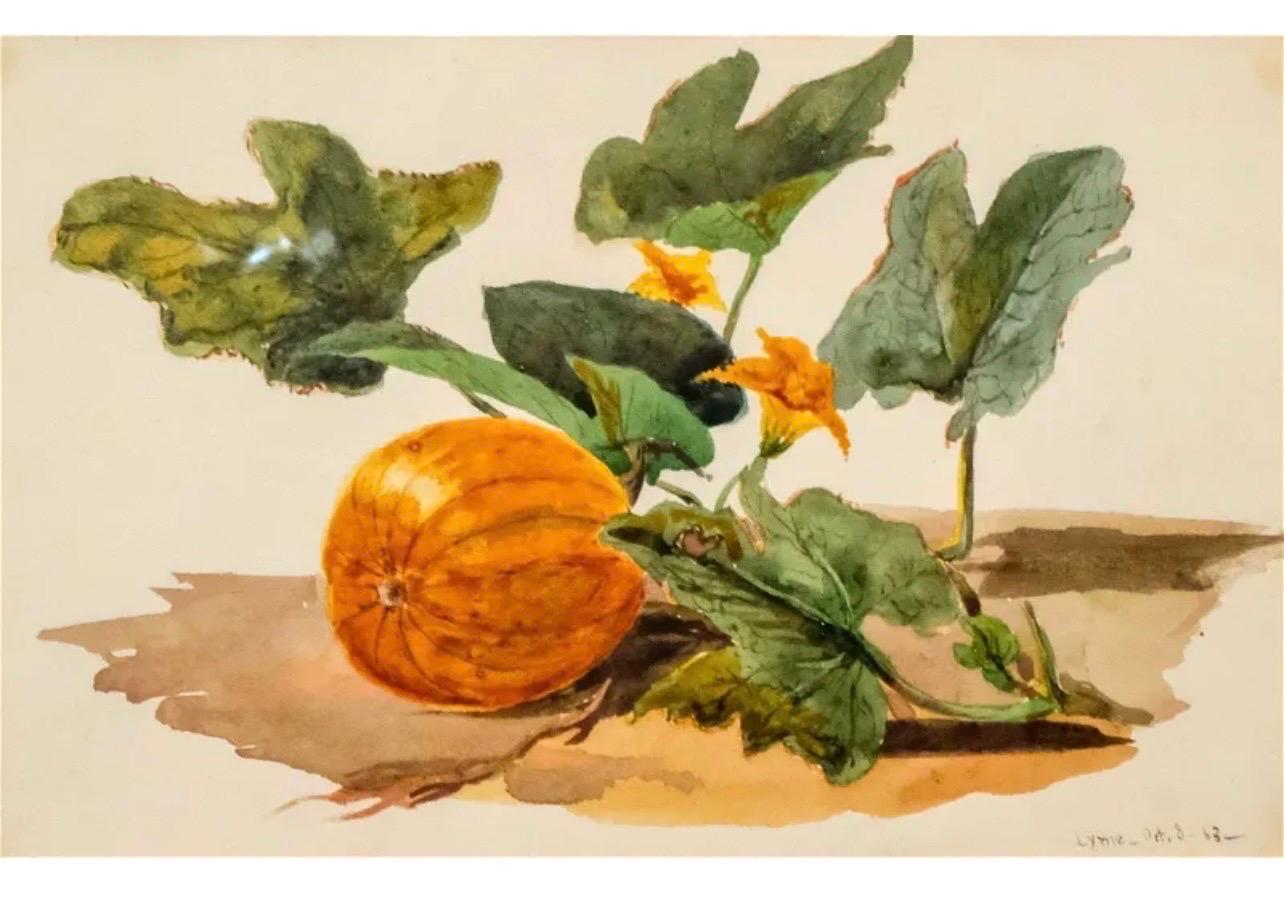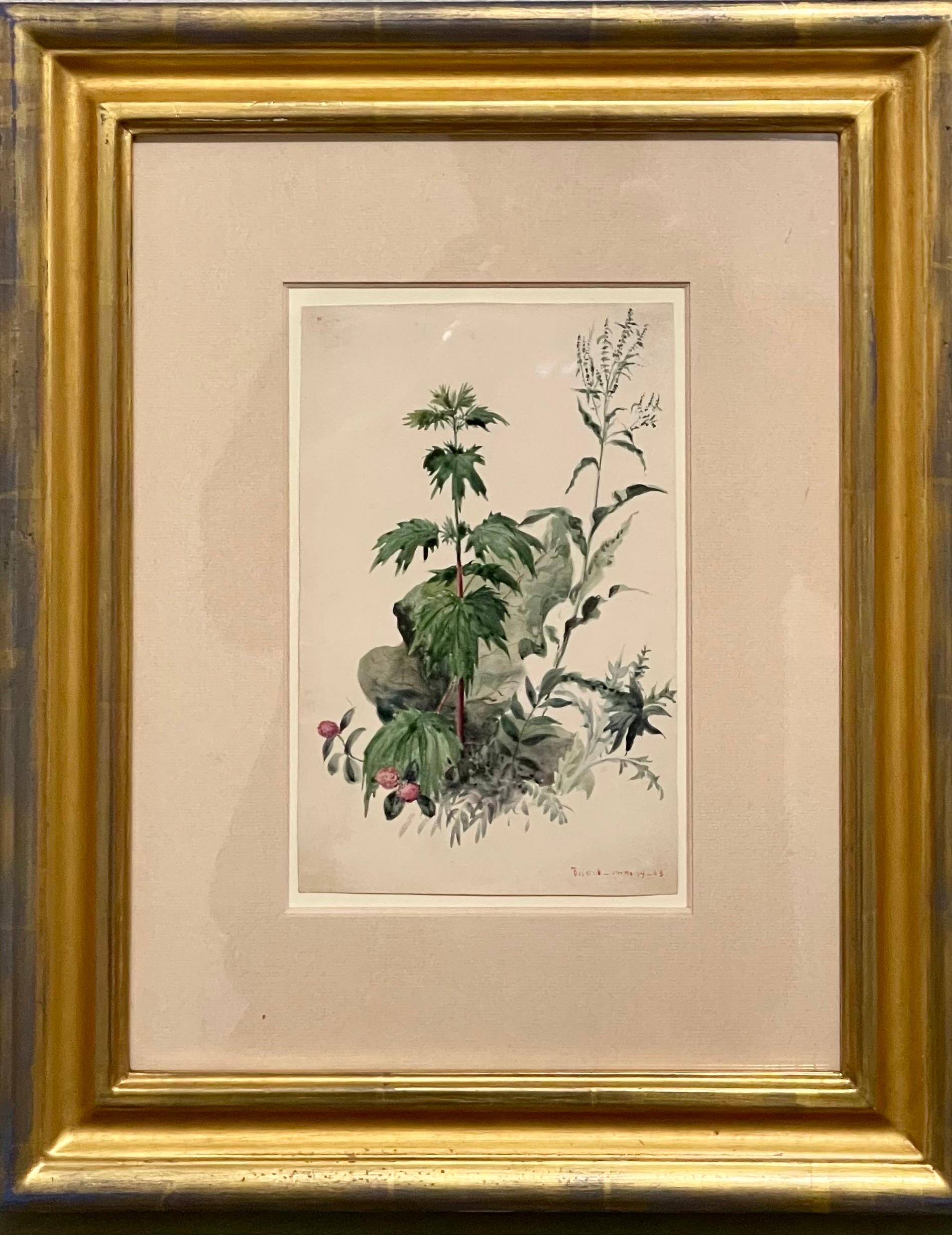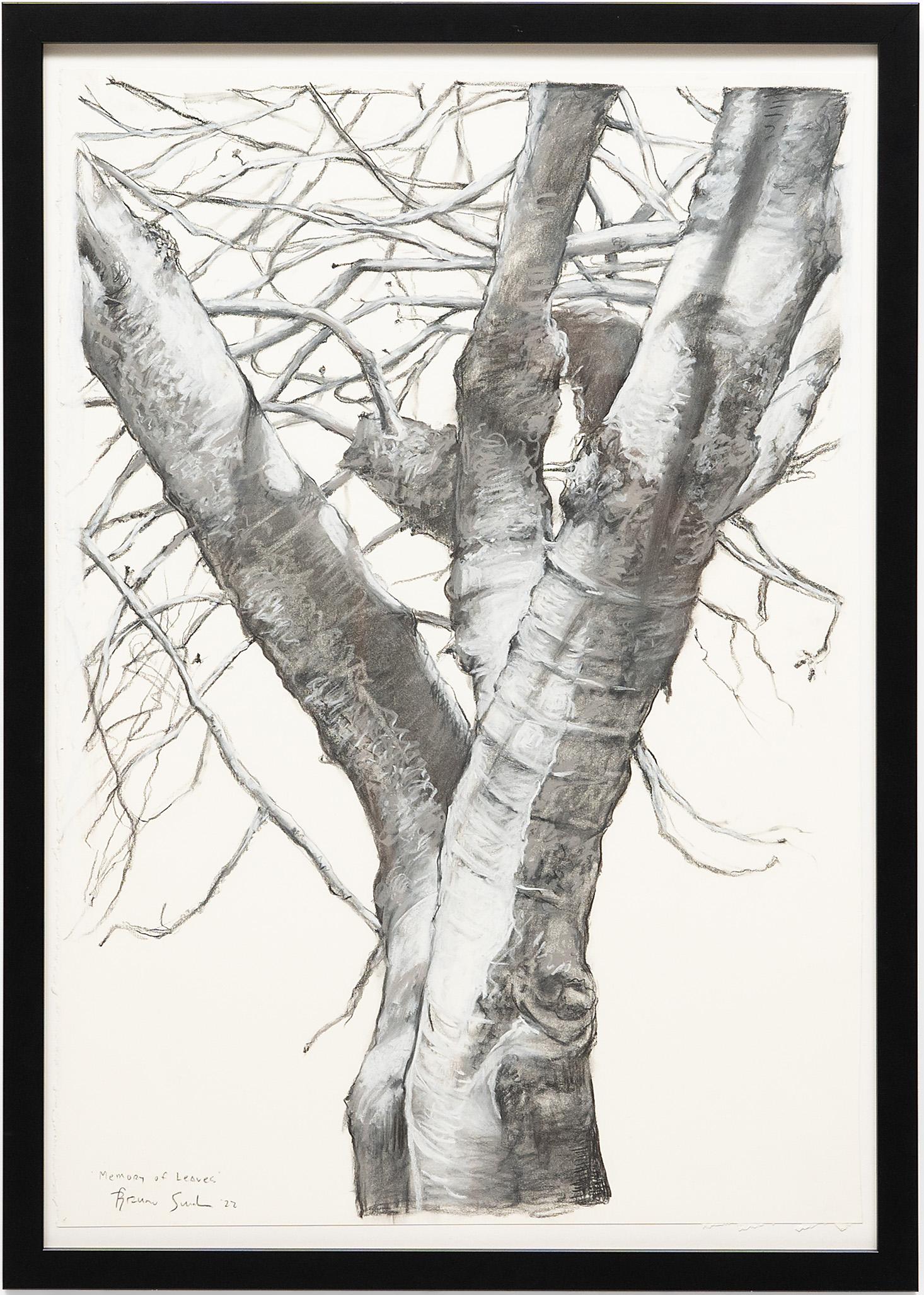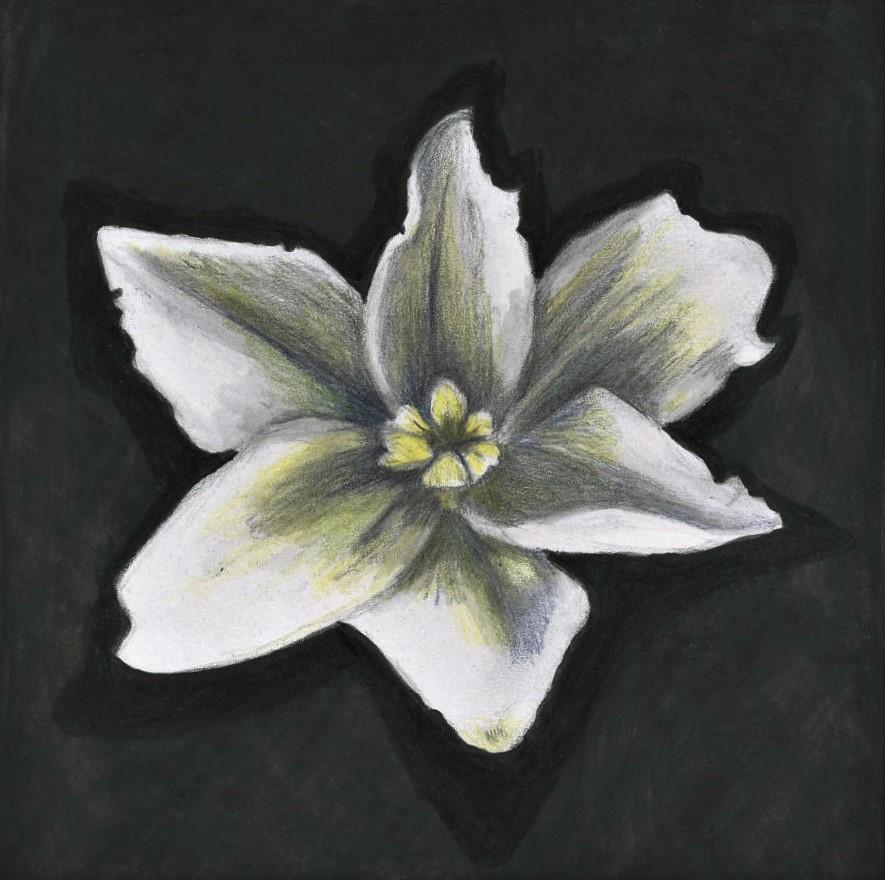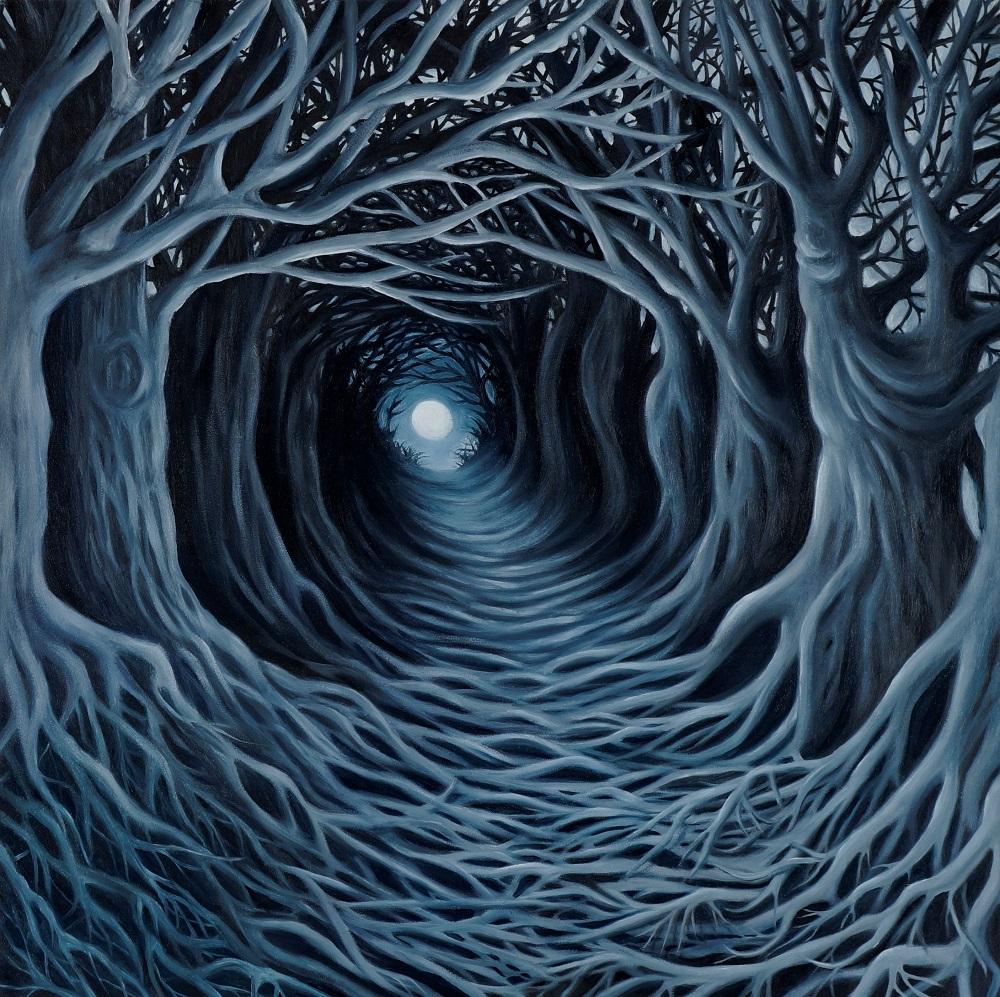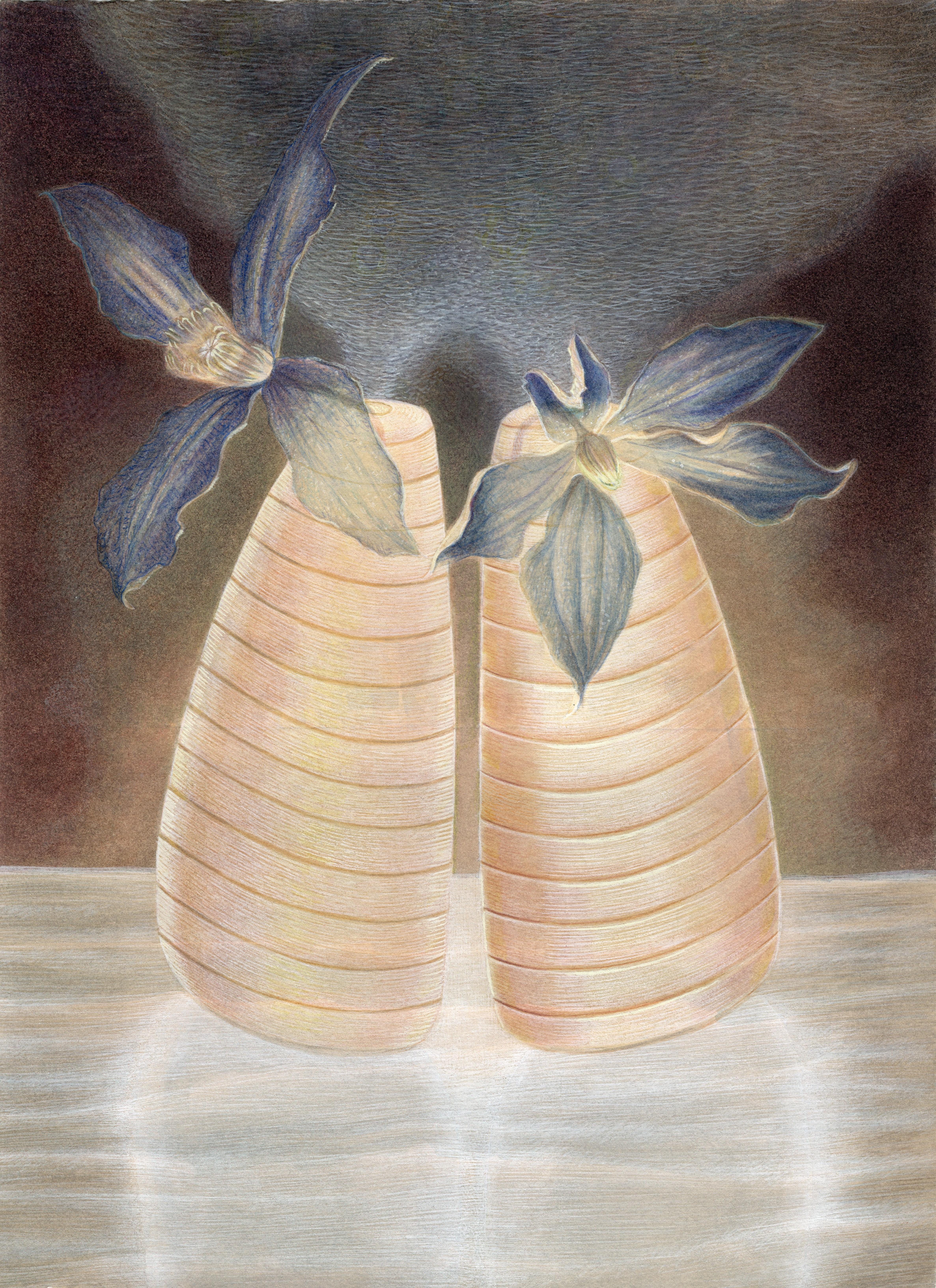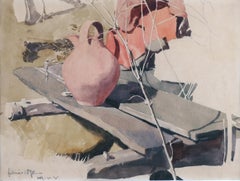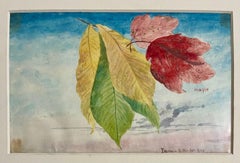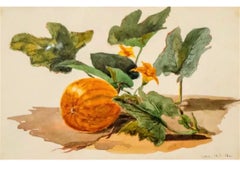Queen of the night - tulip / botanical watercolor
View Similar Items
Want more images or videos?
Request additional images or videos from the seller
1 of 5
Adrienne ShermanQueen of the night - tulip / botanical watercolor
About the Item
- Creator:
- Dimensions:Height: 25.75 in (65.41 cm)Width: 20.25 in (51.44 cm)Depth: 0.94 in (2.39 cm)
- Medium:
- Movement & Style:
- Period:
- Condition:
- Gallery Location:Burlingame, CA
- Reference Number:Seller: FDSHEA0131stDibs: LU37532738781
About the Seller
5.0
Vetted Seller
These experienced sellers undergo a comprehensive evaluation by our team of in-house experts.
Established in 2012
1stDibs seller since 2016
129 sales on 1stDibs
Typical response time: 2 hours
More From This SellerView All
- White Emblem Orchid / botanical watercolorBy Adrienne ShermanLocated in Burlingame, CAWhite Emblem Orchid featured in a sophisticated monochromatic grey indigo botanical watercolor crated by artist Adrienne Sherman. Her poetic floral series is at once modern, fresh an...Category
21st Century and Contemporary Naturalistic Still-life Drawings and Water...
MaterialsWatercolor, Archival Paper
- Mademoiselle / botanical orchid watercolorBy Adrienne ShermanLocated in Burlingame, CA'Mademoiselle' is a sophisticated subdued, yellow and cream with green and brown still life orchid composition. The botanical watercolor created by a...Category
21st Century and Contemporary Naturalistic Still-life Drawings and Water...
MaterialsWatercolor, Archival Paper
- Empty Booth - iconic watercolor - Red Devil FireworksLocated in Burlingame, CAEmpty Booth - an iconic American original watercolor painting - 36 x 24 inches - by James Torlakson, who is known for his photorealist oil paintings, watercolors and aquatint intaglio etchings. Empty Booth depicts the inside of an empty fireworks booth with a Red Devil...Category
21st Century and Contemporary American Realist Still-life Drawings and W...
MaterialsWatercolor, Archival Paper
- St. Briac, France - watercolor, matted in archival sleeveBy Javier Arizmendi-KalbLocated in Burlingame, CASt. Briac, France watercolor created by Mexican-American contemporary visual artist and celebrated architect Javier Arizmendi-Kalb creates watercolors with graphite on paper, as a method of personal journaling his travels, both personal and professional. The series of watercolors depicts places where the artist visits, and captures the essence of the place and its atmosphere. This work is 9 5/8 x 4 1/8 inches and is matted in an archival museum mat with an outer dimension of 15 3/8 x 9 3/4 inches. And it comes in a crystal clear archival storage...Category
21st Century and Contemporary Contemporary Landscape Drawings and Waterc...
MaterialsWatercolor, Archival Paper
- Dinan, France - watercolor, matted in archival sleeveBy Javier Arizmendi-KalbLocated in Burlingame, CADinan, France watercolor created by Mexican-American contemporary visual artist and celebrated architect Javier Arizmendi-Kalb creates watercolors with graphite on paper, as a method of personal journaling his travels, both personal and professional. The series of watercolors depicts places where the artist visits, and captures the essence of the place and its atmosphere. This work is 7 x 10 inches and is matted in an archival museum mat with an outer dimension of 12 3/4 x 15 7/8 inches. And it comes in a crystal clear archival storage...Category
21st Century and Contemporary Contemporary Still-life Drawings and Water...
MaterialsWatercolor, Archival Paper
- A suspiciously Low Tide, 2021Located in Burlingame, CA'A Suspiciously Low Tide, 2001', the original painting is 20 x 40 inches and the outer dimensions of the frame is 30 x 50 inches. Artist signed, titled and dated. Condition is excell...Category
20th Century American Realist Still-life Drawings and Watercolors
MaterialsWatercolor, Archival Paper
You May Also Like
- Clay jug on a bench - The essence of the clay jar revealed by the sunlight -By Hans Richard von VolkmannLocated in Berlin, DEHans Richard von Volkmann (1860 Halle (Saale) - 1927 ibid.), Clay jug on a bench. Pencil and Watercolour on paper. 20 x 26,7 cm (visible size), 37 x 45 cm (frame), dated and monogrammed lower left "Februar 1890 - HR. V. V." - Minimally tanned. Framed behind glass in a passepartout. About the artwork Using the technique of his early youth - pencil and watercolour - Hans Richard von Volkmann depicts a still life. However, this is not a conventional indoor still life, but an open-air depiction, painted outdoors and not in the studio. It is therefore an open-air painting, characteristic of von Volkmann's oeuvre, which could have been painted in the Willingshausen colony of painters, where open-air painting was programmatically practised there and the artist stayed there that year. And indeed, this painting is a manifesto of open-air painting. Von Volkmann demonstrates that leaving the studio for the light of nature leads to an entirely new quality of art. To prove this, he uses the genre of still life, which can be described as the studio subject par excellence. Moreover, light plays an essential role in the classical still life. It is the real protagonist of the still life. And it is precisely this moment, essential to the still life, that von Volkmann exploits to demonstrate the potential of plein-air painting: He presents the objects as they appear in the sunlight. The date of February and the bare branches in the foreground make it clear that this is a clear winter day in bright sunlight. The delicate plant in the foreground casts a clearly defined shadow, as does the jug. However, the shadow is most pronounced on the jug itself: The underside of the handle appears almost black, making the top, and therefore the jug itself, shine all the more brightly. The shining of the objects in the sunlight is also visible on the bench. As complementary phenomena to the shadow zones, light edges can be seen on the boards of the seats and the upper foot of the bench shines entirely in the light. To achieve this intensity of light, von Volkmann activated the bright white of the painting ground. By depicting the objects in glistening sunlight, von Volkmann demonstrates that this quality of light is only to be found outdoors. And this light leads to a new way of looking at the objects themselves. The jug on the bench seems like an accidental arrangement, as if the artist had stumbled upon this unintentional still life and captured it with fascination. And in this fascination there is a moment of realisation that refers to the objects themselves. It is only when they shine brightly in the sunlight that their true nature is revealed. In this way, sunlight allows the objects to come into their own, so to speak. Sunlight, which is not present in the studio, gives the still life an entirely new dimension of reality, which is also reflected in the colours interwoven by the sunlight: The bench and the jug stand in a harmonious grey-pink contrast to the green of the implied meadow. The emphasis on the jug as the central subject of the picture also implies that the watercolour has not been completed. This non finito inscribes a processuality into the picture, making it clear that something processual has been depicted, the temporality of which has been made artistically permanent. This is why von Volkmann signed the painting and dated it to the month. About the Artist Von Volkmann made his first artistic attempts at the age of 14. He painted many watercolours of his home town of Halle. This laid the foundation for his later outdoor painting. In 1880 his autodidactic beginnings were professionalised with his admission to the Düsseldorf Art Academy. There he studied under Hugo Crola, Heinrich Lauenstein, Johann Peter Theodor Janssen and Eduard von Gebhardt until 1888. Von Volkmann then moved to the Karlsruhe Academy, where he was Gustav Schönleber's master pupil until 1892. In 1883 he came for the first time to Willingshausen, Germany's oldest painters' colony, at the suggestion of his student friend Adolf Lins...Category
1890s Naturalistic Still-life Drawings and Watercolors
MaterialsWatercolor
- Maple Leaves Watercolor Painting 19th C. American Artist Charles DeWolf BrownellBy Charles De Wolf BrownellLocated in Surfside, FLCharles De Wolf Brownell (American, 1822 - 1909) Watercolor on paper of maple leaves against the sky, Hand dated and inscribed "Papaw - E.H....Category
Early 1900s Naturalistic Landscape Drawings and Watercolors
MaterialsWatercolor
- Pumpkin Vine Watercolor Painting 19th C. American Artist Charles DeWolf BrownellBy Charles De Wolf BrownellLocated in Surfside, FLCharles De Wolf Brownell (American, 1822 - 1909) Watercolor on paper depicting a pumpkin on a flowering vine Hand dated and inscribed "Lyme ...Category
19th Century Naturalistic Landscape Drawings and Watercolors
MaterialsWatercolor
- Plants, Bristol 1863 Watercolor Painting American Artist Charles DeWolf BrownellBy Charles De Wolf BrownellLocated in Surfside, FLCharles De Wolf Brownell (American, 1822 - 1909) Watercolor on paper depicting several plants in close proximity Hand dated and inscribed "Br...Category
19th Century Naturalistic Landscape Drawings and Watercolors
MaterialsWatercolor
- "Memory of Leaves, " Charcoal on Paper, 2023By Bruno SurdoLocated in Chicago, ILChicago-based fine art painter Bruno A. Surdo is classically trained in drawing and oil painting in the tradition of Renaissance masters. With strong command of the human form, Surdo creates dynamic compositions of people and places that communicate a rich commentary on the world around him. Depicting trees from personal encounters, Surdo’s latest body of work entitled “Tree Spirits” takes us on a foray into the forest, where leaves, branches and burls express something deeply personal. Applying his mastery of figurative realism to the natural world, he experiments with form and texture to uncover the intangible spirits of trees. This charcoal drawing entitled “Memory of Leaves” beautifully illustrates the branching form of a mature birch tree. Loosely drawn with informal, sketch-like linework, the tree is shown in the middle of winter, bare of leaves and white with frost. Surdo’s skillful placement of shadow illustrates the forking branches with incredible texture and effortless realism. The intricate play of light and dark is accentuated by the stark white background, a negative space that isolates the tree in space and time. Restricting the composition to only a portion of the tree trunk, Surdo accentuates the tree’s abstract form, lingering on areas of unusual shape or texture. Seeking to convey the strong emotional response elicited by his initial encounter with the tree, Surdo focuses on the tree’s sculptural form, contrasting the strong trunk...Category
21st Century and Contemporary Naturalistic Still-life Drawings and Water...
MaterialsPaper, Charcoal
- "Faith, " Charcoal on Paper, 2023By Bruno SurdoLocated in Chicago, ILChicago-based fine art painter Bruno A. Surdo is classically trained in drawing and oil painting in the tradition of Renaissance masters. With strong command of the human form, Surdo creates dynamic compositions of people and places that communicate a rich commentary on the world around him. Depicting trees from personal encounters, Surdo’s latest body of work entitled “Tree Spirits” takes us on a foray into the forest, where leaves, branches and burls express something deeply personal. Applying his mastery of figurative realism to the natural world, he experiments with form and texture to uncover the intangible spirits of trees. Entitled “Faith,” this small-scale charcoal drawing depicts a tree trunk carved with two deep cuts in the shape of a cross. The carving has healed over, assimilated into the bark as just another interesting detail. Up close, the work is loosely drawn with a heavy hand, but from afar, the natural scene still achieves a sense of realism. The tree trunk is conveyed through chaotic scribbling and aggressive strokes of light and dark charcoal, resulting in a pattern that simulates the rough texture of bark. Light falls softly on the tree, illuminating its form against the dark, atmospheric surroundings. The striking imagery of this work conveys the strong emotional response elicited by Surdo’s personal encounter with this tree. Restricting the composition to only the scarred portion of the tree trunk, Surdo focuses on symbolism of the cross carved into the tree’s side. The carving was inflicted upon the tree by an individual, whether as an act of graffiti or the object of adoration. Despite this wound, the tree persists and grows, adapting and changing until the mark is but another interesting detail. The tree’s spirit endures and speaks to the strength it takes to heal oneself, whether physically or mentally. Charcoal on paper...Category
21st Century and Contemporary Naturalistic Landscape Drawings and Waterc...
MaterialsPaper, Charcoal
Recently Viewed
View AllMore Ways To Browse
Bronze Sculpture Saint Martin
Italian Glass Abstract Face Art
Vega By Morris
1930s Cubism Animal
Bakare Babatunde
Butterfly Dead
Pottery Barn Teen
Lady Susan
Miro Triptych Art
Olive Oil Press
Youth Guild
Big Size Refrigerators
Paintings With Sky With Moon And Stars
The Day The Earth Stood Still
Dolly Up
Porter Lyons
Victor Mayer Cross
Robert Fields For Linker
